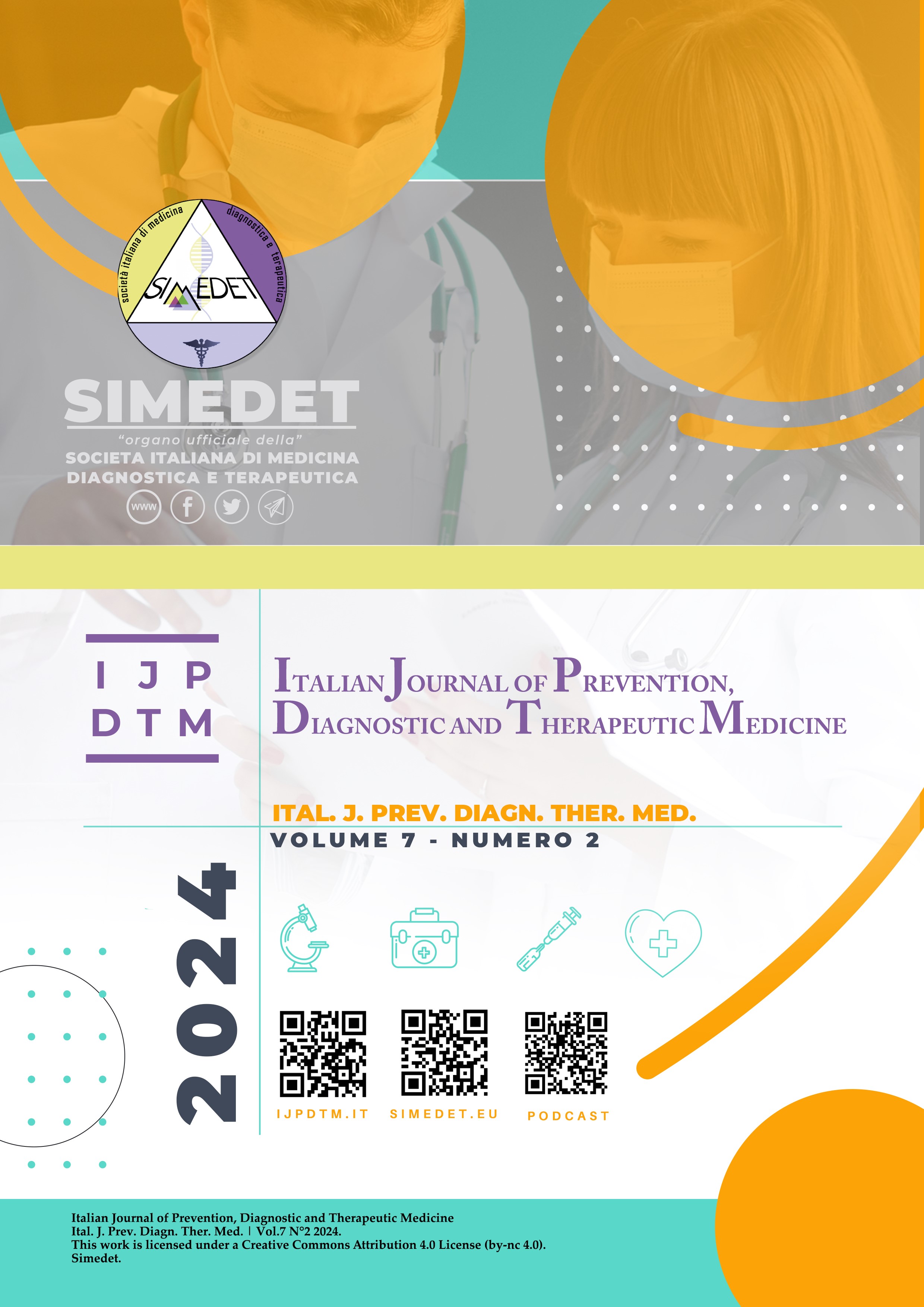Change management and clinical governance in surveillance, prevention and control of healthcare-related infections
Main Article Content
Abstract
Healthcare Organization, Technological Innovation, Safety of care and management and prevention of risk from healthcare-related illness.
Crucial themes, key activities of Healthcare Management and one of the concrete applications of Clinical Governance.
Within hospitals, HAIs represent the largest number of adverse events that cannot be entirely avoided but are certainly predictable and partly preventable.
The Barletta Hospital (ASL BAT) thus launched a Clinical Governance process in 2024 applied to the Infection Control process which, in relation to the results, could represent an organizational management model that can be exported to other local, regional and even extra-national healthcare contexts. regional. regional.
METHODS :
An organizational model has been prepared that allows streamlining and optimizing the traceability of flows, the involvement of the various professionals competent in the matter, guaranteeing an effective, safe, appropriate and timely organizational path, as well as a significant improvement in the quality of care and safety of treatment.
RESULTS:
The experimental project involves the adaptation of the Organization in terms of Infection Control in line with the criteria of Safety and Organizational and Technological Innovation, also taken up by the legislation on Institutional Accreditation and Certification of Excellence.
CONCLUSIONS:
An Organizational Model that exploits digital technology has been implemented. An Ordinary and Extraordinary Management Plan for ICA, with the creation of a database where all the data relating to the preventive and reactive actions implemented following reporting/notification of the case converge.
Downloads
Article Details

This work is licensed under a Creative Commons Attribution-NonCommercial 4.0 International License.
References
• Joint Commission International International patient safety goals. http://www. jointcommissioninternational.org/improve/international-patient-safety-goals/ (Accessed September 22, 2016);
• Hessels A.J.Larson E.L.Relationship between patient safey climate and standard precaution adherence: a systematic review of the literature.J Hosp Infect. 2015; 92: 349-362;
• Landers T, Davis J, Crist K, Malik C APIC MegaSurvey: Methodology and overview..Am J Infect Control. 2017 Jun 1;45(6):584-588. doi: 10.1016/j.ajic.2016.12.012. Epub 2017 Jan 23.PMID: 28126260;
• Dixon BE, Jones JF, Grannis SJ Infection preventionists’ awareness of and engagement in health information exchange to improve public health surveillance..Am J Infect Control. 2013 Sep;41(9):787-92. doi: 10.1016/j.ajic.2012.10.022. Epub 2013 Feb 14.PMID: 23415767;
• Gauld R, Horsburgh S . Healthcare professionals’ perceptions of clinical governance implementation: a qualitative New Zealand study of 3205 open-ended survey comments..BMJ Open. 2015 Jan 5;5(1):e006157. doi: 10.1136/bmjopen-2014-006157. PMID: 25564142;
• Lagreca, D., Carpagnano, L. F., & Benvenuto, M. (2024). Quali profili di capacità e competenze per il Patient Safety Manager?. Mecosan - Management Ed Economia Sanitaria - Open Access, (126). https:// doi.org/10.3280/mesa2023-126oa17290
• Mannion R, Freeman T, Millar R, Davies H. Effective board governance of safe care: a (theoretically underpinned) cross-sectioned examination of the breadth and depth of relationships through national quantitative surveys and in-depth qualitative case studies..Southampton (UK): NIHR Journals Library; 2016 Jan.PMID: 26844311;

